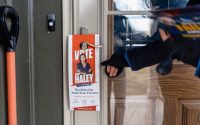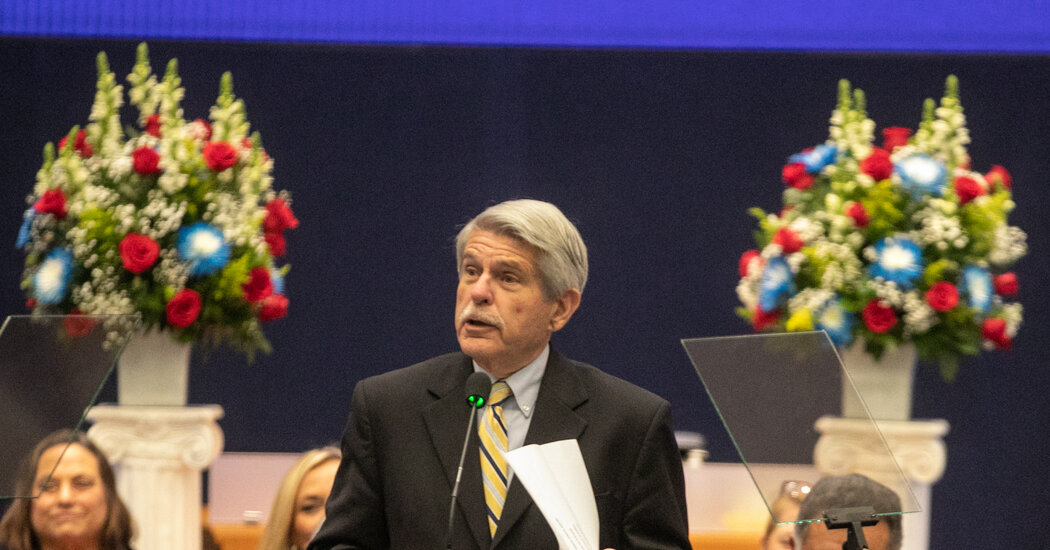Saying Goodbye to Dianne Feinstein, a San Francisco Icon
Dianne Feinstein was laid to rest last week with a funeral service on the steps of San Francisco City Hall, a fitting backdrop for a woman who was as much a symbol of the city as the Golden Gate Bridge is.
It certainly felt that way when I was growing up in San Francisco.
A statue of Feinstein, the city’s first female mayor and later California’s first female U.S. senator, was on display in City Hall. Her name was on buildings. Her photo hung on the walls of restaurants. She spent much of her time in Washington, D.C., but in San Francisco, Feinstein felt ever-present.
I went to the same high school she did, the private all-girls Convent of the Sacred Heart, which, I should add, Representative Nancy Pelosi also attended. By the time I came along, gone were the white gloves and the nuns whom Feinstein so loved, but the curriculum remained rooted in the idea of female empowerment, and Feinstein was commonly invoked as an example of how far we could go.
“None of the things that she told me as an adult were ever as important as what she showed us as children,” Mayor London Breed, a San Francisco native, said during her funeral. “She showed us a world where women lead, where we lift each other up, so that girls like me could follow in her footsteps.”
For me, Feinstein exemplified the importance of resilience. Every morning on my way to high school, I walked through Harvey Milk Plaza in the Castro district to catch the bus up the hill to Pacific Heights. It was impossible, even if I was running late or needed to cram for that biology test, not to stop for a minute and appreciate the gravity of Milk’s assassination, as well as the woman who led the city through it.
Above almost all else, Feinstein believed in San Francisco’s ability — and her own — to come back from anything, to “rise from the ashes.” She told me as much when I traveled with others from my high school newspaper to Washington to cover President Barack Obama’s second inauguration. We asked the senator if she might sit for an interview with us, and she agreed. Feinstein always made time for Convent girls, even if she harbored suspicions that we had gone soft, with the nuns no longer in charge of our discipline.
We walked through the halls of the Hart Senate Office Building in awe, slowly taking it all in. Then, suddenly, through a glass door and past rows of desks where staff members were answering phones, there she was. It was like watching a cartoon character come to life, or a movie star step through the screen.
Feinstein ushered us into a conference room and smiled knowingly as we nervously fumbled with our recorders and asked her the opening questions we had been trained to always ask: “Um, what is your name, and how do you spell it?”
We asked her boilerplate questions about her career as a woman and what our school had taught her. She patiently and thoughtfully answered them all, encouraging us all to contribute. Then she shared something I’ve always kept with me. Referring to the mascot that San Francisco gained after the 1906 earthquake and fire, Feinstein said she had long believed that “each one of us has to be like a phoenix.”
“The point of it is that we all suffer defeat — like fires or illness or whatever it may be — and we have to be like the phoenix and rise again,” she said. “You handle defeat, and you come back.”
She brought our group into her office and posed for a picture with each one of us separately, making sure to shake our hands and learn our names, setting a moment aside so that we would each have our individual memories of her.
I found myself stunned when she died, her ever-present self suddenly present no longer, especially when I saw so many photos of Feinstein from the last year, when she was in poor health and had limited mobility. I realized that I had always pictured her the way she looked on that day when I was in high school: wearing a bright blue pea coat with a matching turquoise necklace, her round face animated and bright, urging a room of teenagers to never give up.
Claire Fahy is a general assignment reporter for The Times. She grew up in San Francisco.
Where we’re traveling
Today’s tip comes from Janine Sprout, who recommends visiting the Alabama Hills in the Owens Valley:
“This is my favorite ‘otherworldly’ place, tucked between Lone Pine and Mt. Whitney. Movie Road winds through acres of huge jumbled boulders in all sorts of smooth sculpted (by nature) shapes resembling potatoes, misshapen bubbles, monoliths, spires, arches. Scene of many Hollywood movies.”
Tell us about your favorite places to visit in California. Email your suggestions to [email protected]. We’ll be sharing more in upcoming editions of the newsletter.
And before you go, some good news
Yelp has released its latest list of the 100 best tacos in the country, and two Southern California restaurants top the rankings.
The restaurant review company, which ranked its restaurants according to the volume of positive reviews each business received on its site, highlighted noteworthy taco dishes from the East Coast to the West, including consommé-soaked birria tacos, crisp beer-battered Alaskan seafood tacos and barbacoa tacos with homemade heirloom corn tortillas.
The list reflects the major trends in the taco world, Yelp said, pointing to this year’s focus on cheesier tacos and artisanal ingredients as evidence of continued innovation in the kind of cooking styles and techniques used to make the dish in the U.S.
And for Californian taco enthusiasts, it should come as no surprise that two of the top five restaurants on the list are Southern California mainstays — Birrieria Little Tijuana, a top-rated birria spot in Riverside, and Frogtowns Gourmet Tacos, a Los Angeles-based truck known for its shrimp tacos.
Find out about the best taco spots to try in your area here.


